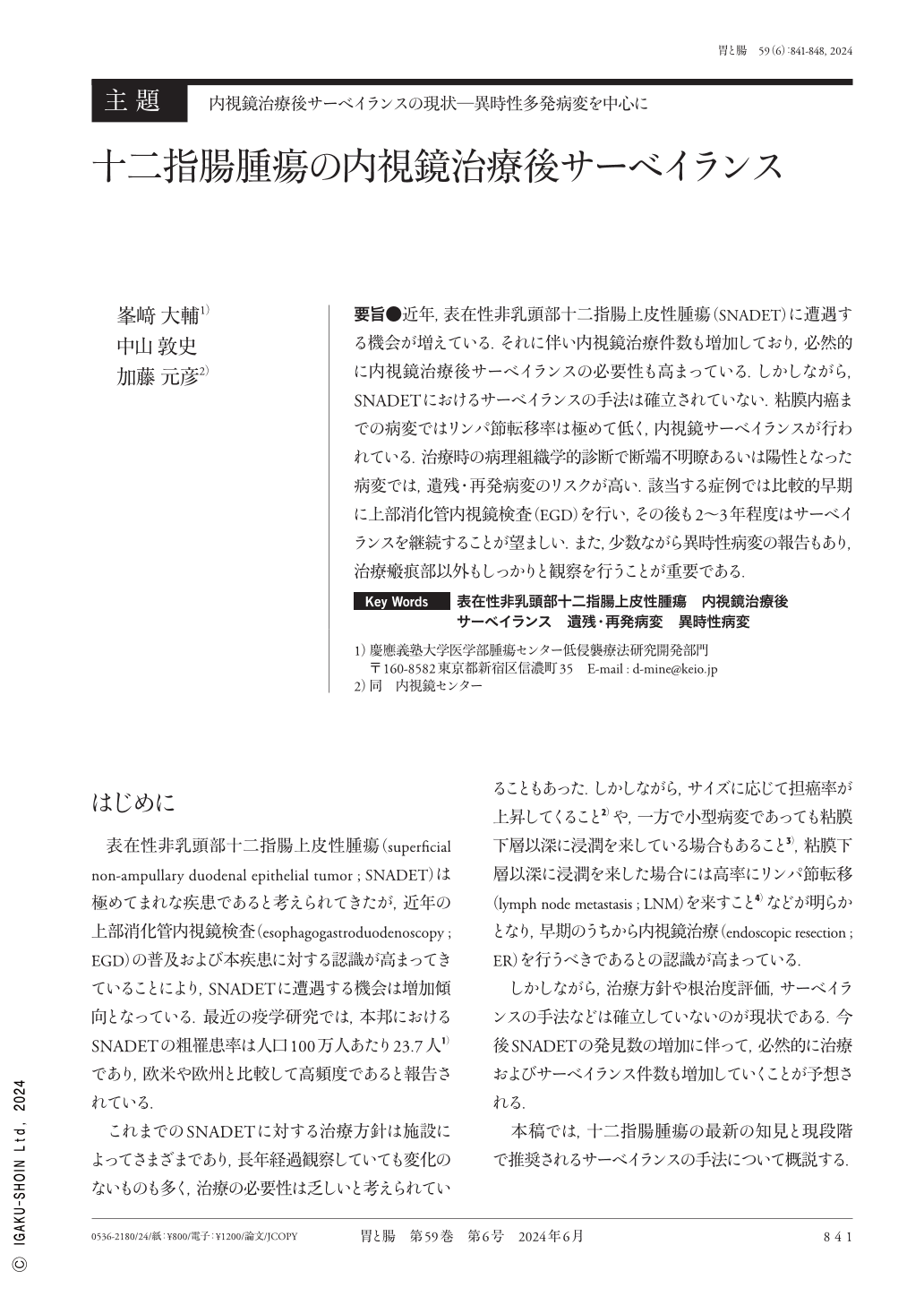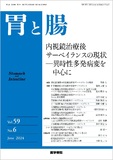Japanese
English
- 有料閲覧
- Abstract 文献概要
- 1ページ目 Look Inside
- 参考文献 Reference
要旨●近年,表在性非乳頭部十二指腸上皮性腫瘍(SNADET)に遭遇する機会が増えている.それに伴い内視鏡治療件数も増加しており,必然的に内視鏡治療後サーベイランスの必要性も高まっている.しかしながら,SNADETにおけるサーベイランスの手法は確立されていない.粘膜内癌までの病変ではリンパ節転移率は極めて低く,内視鏡サーベイランスが行われている.治療時の病理組織学的診断で断端不明瞭あるいは陽性となった病変では,遺残・再発病変のリスクが高い.該当する症例では比較的早期に上部消化管内視鏡検査(EGD)を行い,その後も2〜3年程度はサーベイランスを継続することが望ましい.また,少数ながら異時性病変の報告もあり,治療瘢痕部以外もしっかりと観察を行うことが重要である.
In recent times, the number of cases of SNADET(superficial non-ampullary duodenal epithelial tumors)has increased. Consequently, the number of endoscopic treatment procedures has also increased, resulting in a greater need for surveillance after endoscopic treatment. However, surveillance approaches for SNADET have not yet been established. In adenomas and mucosal cancers, the lymph node metastasis rate is significantly low, and endoscopic surveillance has been utilized. Lesions with histopathologically indistinct or positive margins at the time of treatment are at heightened risk for remnant or recurrence. In such instances, it is advisable to undergo early EGD(esophagogastroduodenoscopy), followed by continued surveillance endoscopy for approximately 2-3 years thereafter. Furthermore, although infrequent, the occurrence of metachronous lesions is possible. As a result, it is crucial to perform thorough observation not only in the treatment-scarred area but also in other sites.

Copyright © 2024, Igaku-Shoin Ltd. All rights reserved.


